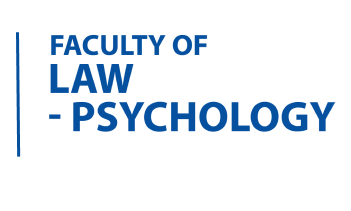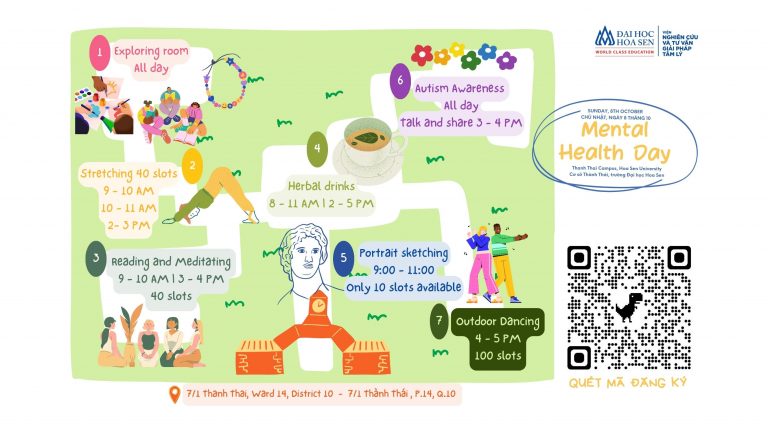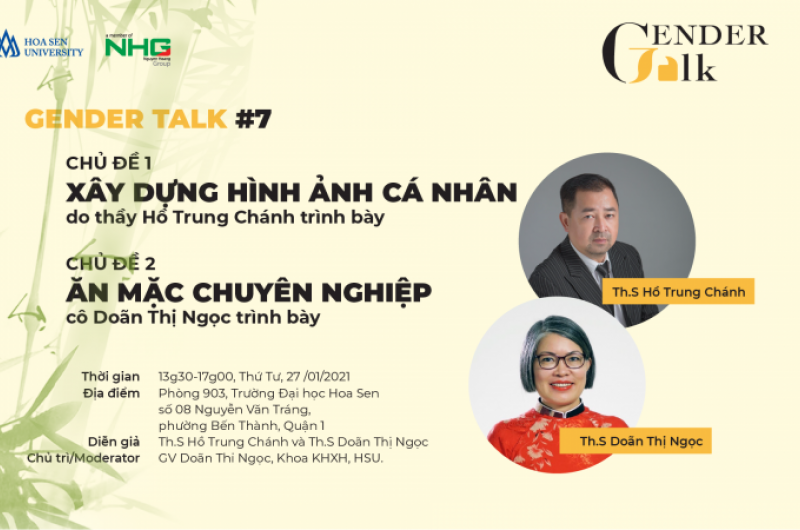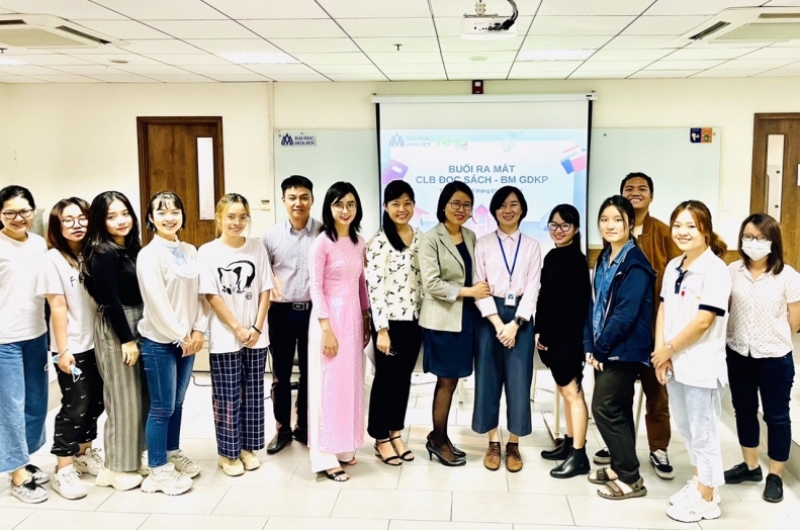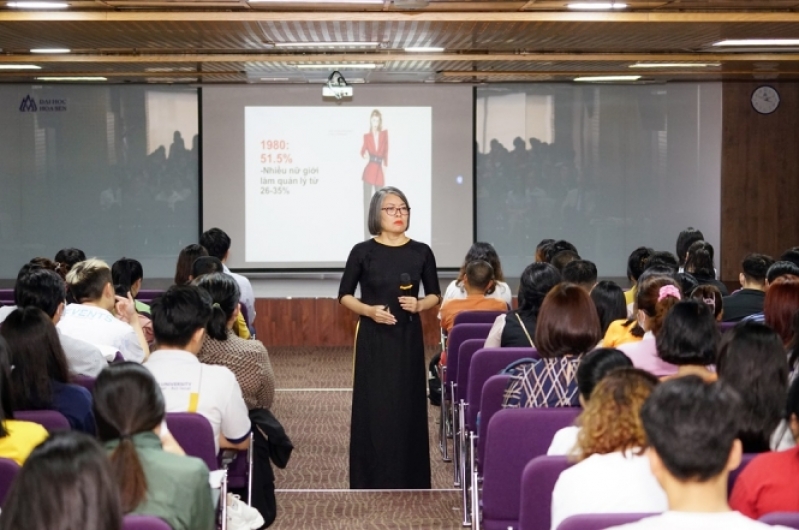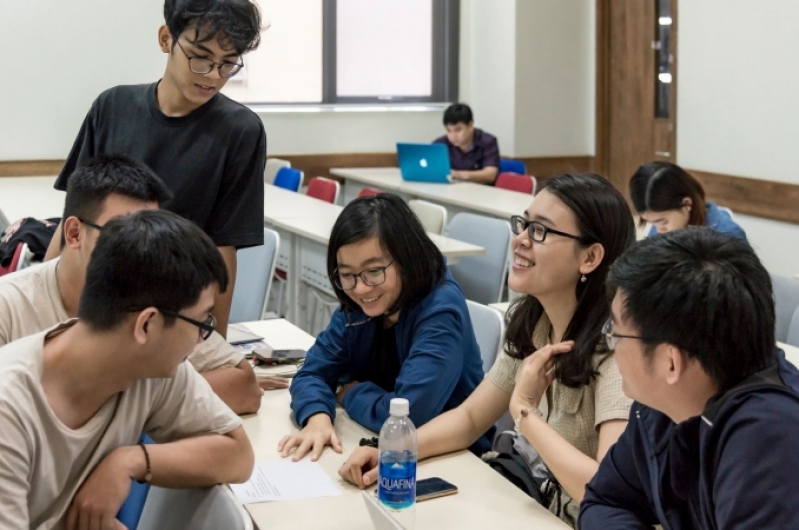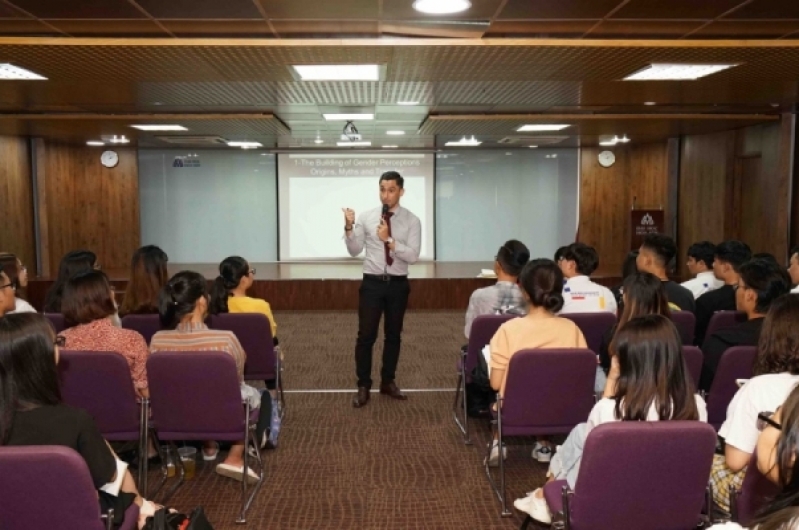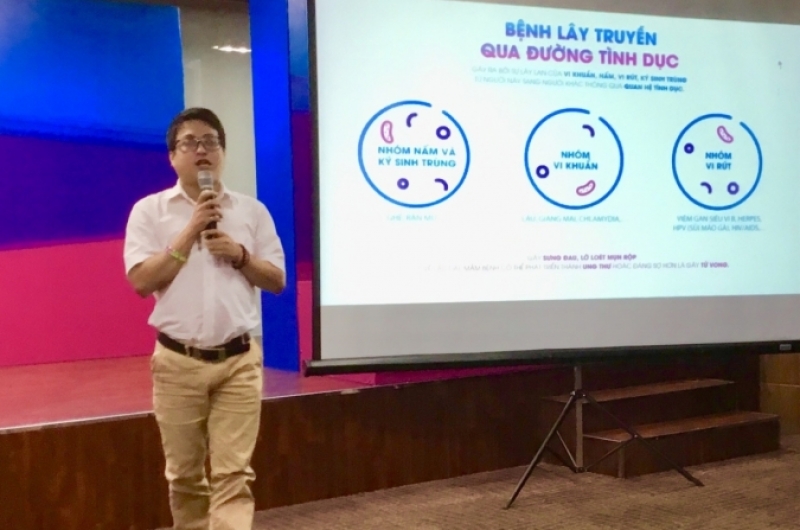Schools play an important role in children’s mental health
December 17, 2019
Currently, many students are experiencing psychological trauma caused by school violence, violence, accidents, loss, etc. These traumas can seriously affect your physical and mental health and your quality of learning. However, access to professional support programs for you in Vietnam is currently very limited.
Therefore, on December 14, 2019, at Nguyen Van Trang headquarters, BM Psychology organized a talk on the topic “Supporting Children with Psychological Trauma – Approach from the School and Community with the support shared by Dr. Susan McConnaughy – Professor at State University of New York, 2019 Fulbright scholar.
The conversation also had the presence of Mr. Nguyen Huu Tan – Dean of the Faculty of Social Work – Da Lat University and nearly 100 lecturers and students of Hoa Sen University as well as teachers and students of other universities. attend.
At the talk, Dr. Susan McConnaughy shared her knowledge in Identifying the consequences of psychological trauma for children; Identifying manifestations of trauma in students; Providing trauma prevention and support programs for students in the school environment, and building support from the community and referral system.
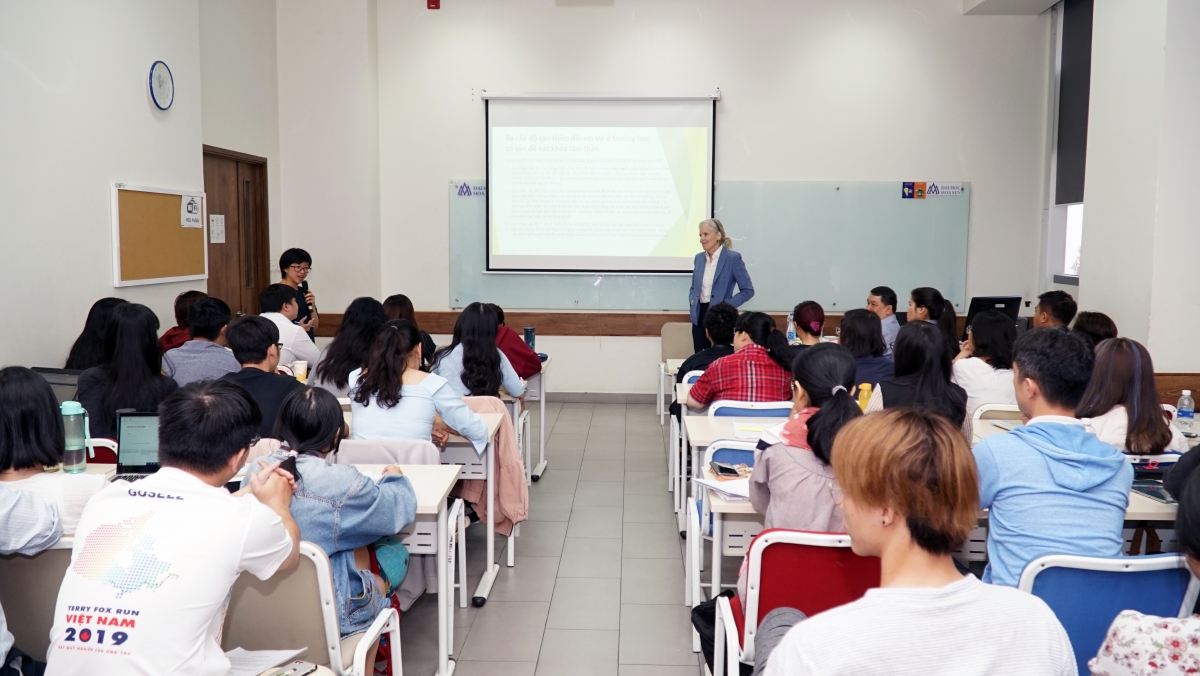
Psychological trauma in children
So that listeners can have an overview of psychological trauma, Dr. Susan has provided several definitions of traumatic events according to scientists that the Doctor feels are the most appropriate and easiest to understand:
“A traumatic event is a frightening, dangerous, or violent event that poses a threat to a child’s life or his or her entire body. Witnessing a traumatic event that threatens the life or physical safety of a loved one is also considered trauma. This is especially important for young children because their sense of security depends on the security they perceive through their attachment figure.”
“Traumatic experiences can initiate strong physical and emotional reactions that can persist long after the traumatic event. Children may feel terrified, helpless, or afraid, as well as have physiological reactions such as a pounding heart, vomiting, or loss of bowel or bladder control. Children who experience not being able to protect themselves or the protection from others to avoid the consequences of a traumatic experience may also feel overwhelmed by the intensity of the physical and emotional reactions. .”
Accordingly, Dr. Susan also introduced some common traumatic conditions in children such as: being abused, witnessing violence between people, car accidents, experiencing natural disasters, war situations, and dogs. bitten, the healing process increases.
Traumatic reactions can include a variety of reactions, such as intense and persistent emotional disturbance, symptoms of depression or anxiety, behavioral changes, difficulty in self-regulation, problems with problems relating to others or forming attachments, loss of previously acquired skills, difficulty concentrating and learning, nightmares, difficulty sleeping and eating, and physical symptoms, such as muscle tension and pain. Older children may use drugs or alcohol, behave in dangerous ways, or engage in unhealthy sexual practices.
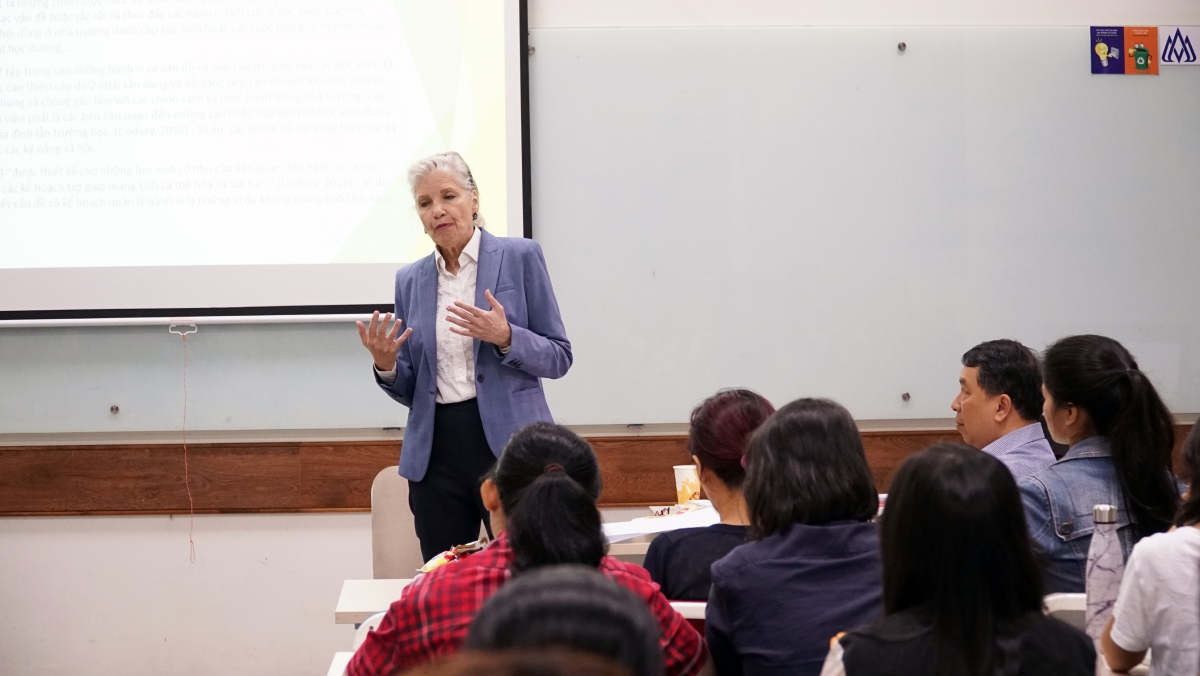
Dr. Susan McConnaughy
At the same time, Dr. Susan also shared more definitions of traumatic stress and post-traumatic disorder (PTSD) in children and said that if not treated, repeated exposure to traumatic events in children can affect the brain. and nervous system and increase health risk behaviors (e.g., smoking, eating disorders, substance use, and high-risk activities). Research shows that survivors of childhood trauma may be more likely to have long-term health problems (for example, diabetes and heart disease) or die at an earlier age. Traumatic stress can also lead to increased use of medical and mental health services and is highly implicated in the juvenile justice and child welfare systems. Adult survivors of traumatic events may also have difficulty establishing fulfilling relationships and maintaining employment.
Three levels of intervention for children in school with mental health problems
Dr. Susan believes that people in Vietnam are similar to people in America in that they do not want to get help from official mental health facilities for a number of reasons, and all of these reasons have the same meaning. something and seeking help can bring negative publicity and unpleasant attention to the child and his or her family.
“I have read that the official mental health care system in Vietnam has traditionally focused on the harshest conditions, such as schizophrenia and epilepsy. Other conditions such as depression, reactions to trauma and loss, and anxiety disorders that can severely hinder a child’s development, or even threaten his or her life, often go unnoticed. to, or only pay minimal attention to. As such, many people will avoid the formal mental health care system, and seek informal care, such as religious leaders (monks or imams), members of age in the family, or school staff.”
Therefore, teachers and staff in schools are in a very good position to recognize when children are having very difficult times and to offer their support. This support helps children not to be stigmatized or avoided. However, this is a delicate process for teachers and school staff
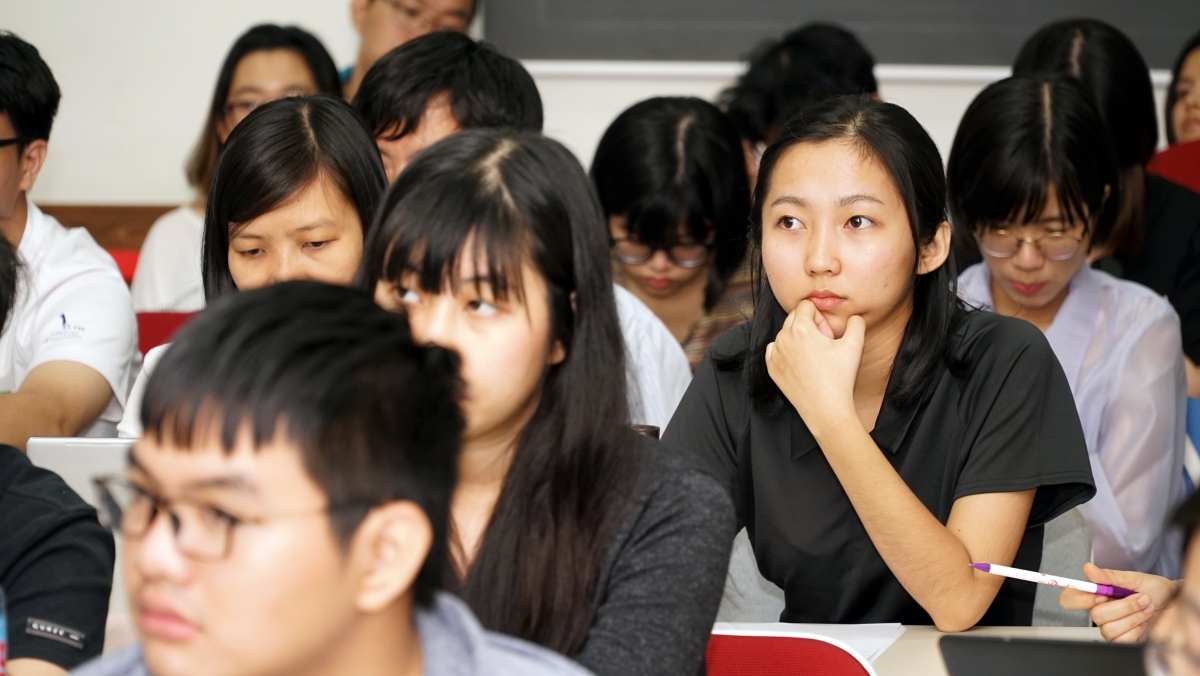
Dr. Susan also said that according to the language of ICD-10 (World Health Organization, 2018), common disorders in children are:
- Specific speech and language development disorders
- Disorders in the development of specific school skills (reading, questioning, math)
- Developmental disorders (such as autism and Asperger syndrome)
- Hyperactivity disorders
- Conduct disorders
- Affective disorders with typical childhood aggression
- Separation anxiety disorder in childhood
- Social anxiety disorder in childhood
Thus, schools play an important role in helping children with mental health problems. Accordingly, Dr. Susan points out 3 levels of school intervention as follows:
- Level 1 interventions are school-wide strategies that aim to prevent student behaviors that create problems or problems and promote positive student behaviors. (Iachini, 2016) – For example, school councils for students or parent meetings on topics such as school bullying, etc.
- Level 2 intervention focuses on identifying students’ problem behaviors and support needs. Tier 2 interventions must be available and accessible to all students who need them and they are embedded in school policies and practices. Parents and teachers must be stakeholders in these interventions so that students are supported both at home and at school. (Lindsey, 2016) – For example, support groups develop academic skills or social skills.
- Level 3 intervention “is designed for students with behavioral and academic needs that require long-term, individualized support plans.” (Lindsey, 2016) – For example, problem-solving groups and behavior management plans are non-clinical examples
Also at the talk, Dr. Susan discussed with everyone the most common problem student behaviors and how to address them, as well as formal and informal strategies for addressing problem behavior and levels of intervention. of the school at level 1,2,3 and the most successful plans today.
| A bit about Dr. Susan McConnaughy Dr. Susan McConnaughy – the State University of New York Professor, and 2019 Fulbright Scholar began working as a social worker in the school system in 1977 and is an advocate for children with disabilities who lack access to legal services required by (then) new federal law, Public Law 94-142 (1975), to ensure that all children with disabilities can receive an appropriate public education at no cost. This law has had a positive and pervasive impact on millions of children across the United States, but at the beginning, many schools had difficulty implementing this law into practice. The reason is that there are few resources to be able to implement the law. She then worked as a policy analyst and advocate in “smaller schools” for seven years as a direct service provider and as a consultation coach. clinical society) in special therapeutic schools for at-risk adolescents (1982-1988). In recent years, she has worked as a professor training undergraduate and graduate students in counseling and social work with children and families. |
